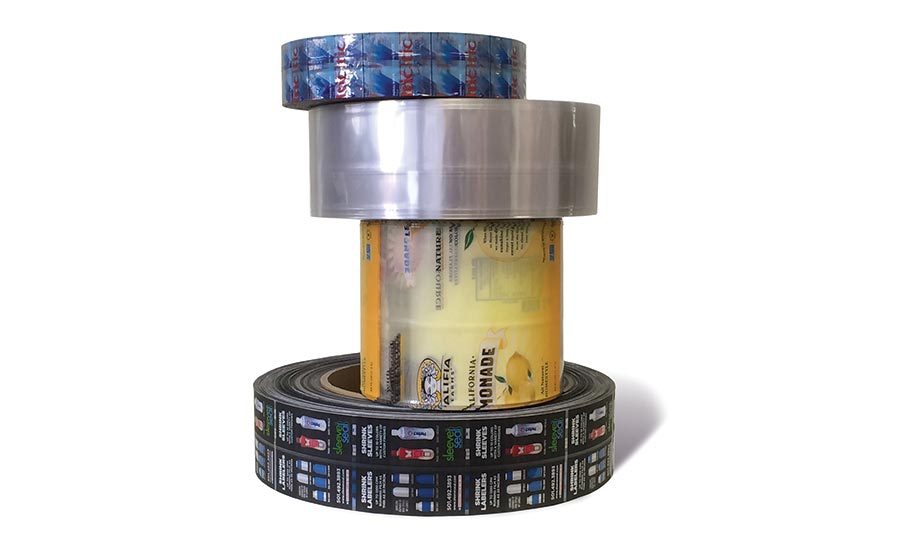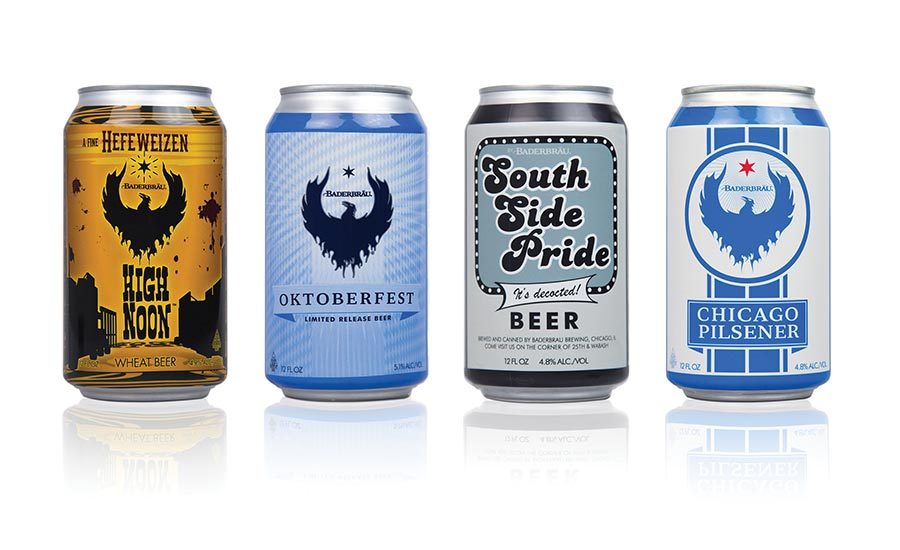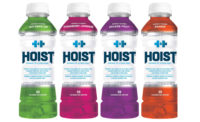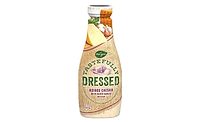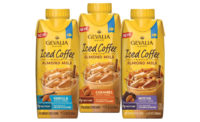In Philip Pullman’s fantasy novel “The Amber Spyglass,” the third book in the “His Dark Materials” trilogy, physicist Mary Malone famously said, “People are too complicated to have simple labels.” In the consumer packaged goods (CPG) market, the same can be said as established and emerging brands look to stand out on crowded store shelves.
As brand owners look to differentiate themselves, data suggests they are turning to various labeling solutions. Cleveland-based The Freedonia Group reported in its June 2015 report “Labels” that demand for labels in the United States is expected to increase 3.8 percent annually through 2019 to $19.7 billion. At 5.4 percent growth, in-mold labeling is projected to have the highest annual increase from 2014 to 2019. However, the next label category with the highest growth during that time period is stretch, sleeve and heat-shrink at 4.9 percent annually, the market research firm forecasts.
Within the beverage market, shrink- and stretch-sleeve labeling materials continue to proliferate, suppliers note.
“The market for shrink and stretch sleeves continues to be one of the fastest growing label markets,” says Gwen Chapdelaine, marketing director for Fort Dearborn, Elk Grove, Ill. “The visual and branding appeal is driving performance since shrink and stretch sleeves provide brand owners the opportunity to utilize the entire package.”
Lou Iovoli, senior vice president of Rochester, N.Y.-based Hammer Packaging, echoes similar thoughts in relation to shrink sleeves. “We see a stable and increasing market for shrink sleeves,” he says. “We believe there are many factors that contribute to the increase, including but not limited to new capacity at co-packers to apply sleeves, the growth of sleeves on aluminum cans, and the next evolution of sleeves that incorporate new value-added coatings and stamping for effect.”
Justin Slarks, director of marketing for Little Rock, Ark.-based Sleeve Seal, agrees that several factors have contributed to the growth of shrink-sleeve labels, but highlights competition as the main driver. “Shrink labels convey a strong brand message at a low cost per impression,” he says. “If a manufacturer delivers a good product that looks great on the shelf, they are competitive.”
Don Earl, president of Overnight Labels Inc., Deer Park, N.Y., points to the media attention about the reliability and flexibility of shrink sleeves as among the reasons for its growth. This coupled with SKU proliferation have made the label category’s growth inevitable, he says.
“With the ever increasing amount of new products being introduced, it’s just normal that the use of shrink sleeves would increase,” Earl says.
However, these are not the only trends contributing to the increased prevalence of shrink-sleeve labels in the beverage market. “Uniquely shaped bottles and the need to satisfy marketing and regulatory requirements are the major factors in determining shrink sleeve usage,” Earl adds.
For example, the U.S. Food and Drug Administration’s (FDA) new Nutrition Facts label requirements that were announced last year could result in some brand owners needing more label real estate, Hammer Packaging’s Iovoli says. The new Nutrition Facts label is set to go into effect on July 26, 2018; however, manufacturers with less than $10 million in annual sales will have an additional year to comply, the FDA states.
Fort Dearborn’s Chapdelaine adds that shrink and stretch sleeves can assist consumer transparency measures in another way. “Consumers are increasingly demanding transparency from the products they purchase,” she says. “Shrink and stretch sleeves can provide the consumer with transparency by using clear windows on portions of the label so that consumers can view the contents of the product in a clear container.”
Although shrink and stretch sleeves can aid in regulation and transparency efforts, SKU proliferation and the need to garner consumer attention in a crowded market are in lockstep with these label solutions.
“There are a lot of new beverage product launches,” Chapdelaine says. “Shrink and stretch sleeves help beverages differentiate themselves on shelf by combining shape and color for 360-degree, eye-catching beverage packages. This combination creates product distinction and visual appeal not achievable with other label formats.”
Sleeve Seal’s Slarks echoes similar sentiments. “The look and feel of a product are both critical in today’s market,” he says. “Design quality, print quality, shrink quality and how the bottle feels in the customer’s hand are all factors. There is a lot of competition on the shelves, and customers gravitate to the products that convey the right message.”
Broad appeal
In line with the diverse new beverage products entering the market, the same broad scope can be found among those utilizing shrink and stretch labels, suppliers note.
“We’ve seen continued use of shrink and stretch sleeves by established beverage brands as well as emerging ones,” Fort Dearborn’s Chapdelaine says. “We’ve also seen [that] more spirits products are being introduced in sleeves and more can beverages are now utilizing sleeves. In the craft beer market, shrink sleeves are being used as an economical alternative to pre-printed cans. The sleeves offer volume and versioning versatility.”
Yet, suppliers note that company size and investments can impact the decision to use stretch and shrink-sleeve labels. “Heritage brands see sleeves as an excellent opportunity for restage; however, it often comes with a capital constraint if they have to invest internally for application equipment,” Hammer Packaging’s Iovoli explains. “Emerging brands, however, often use outside co-packing, and we have seen a steady increase in the volume of co-packers with sleeve applicators to assist.”
Sleeve Seal’s Slarks adds that the company has seen both established and emerging brands incorporating shrink labels with heritage brands investing in faster and better application equipment, while newer, start-up brands are looking to make strategic investments in labeling solutions.
The reasonings for these investments include the benefits mentioned earlier as well as many more. “The benefits include [a] low cost per impression, high-end print/graphic options, durability of the label and the ability to recycle,” Slarks says. “Another benefit is that shrink labels offer tamper-evident seals that are easily removable with a perforation.”
Overnight Label’s Earl notes that although shrink-sleeve labels come with a higher cost, the benefits can outweigh the costs. “Shrink labels are more expensive than stretch, but they offer more visual appeal because of the better quality of the material,” he says. “Shrink sleeves are easier to print as the material is more stable than stretch labels. You can also spot-matte varnish a shrink label, which is a very popular option for many new brands. To my knowledge, you cannot flip the web without substantial distortion on a stretch label.”
However, the labeling materials are not without their own challenges, which should be considered. “Managing consistent application and producing a consistent shrink are difficult unless you have good-quality application equipment,” Sleeve Seal’s Slarks says. “Another factor that we often see overlooked is that there are many printers that are not applying shrink distortion to label artwork. It is a high-tech service, but if the flat artwork is not corrected with the bottle shape in mind, the final product appears to have a distorted design that can reduce the readability of the label.”
Hammer Packaging’s Iovoli notes that all labeling materials come with their own set of challenges, but the company employs a dedicated engineering department, which usually can resolve primary issues for its customers.
“Sleeve material selection is the most critical to performance,” he says. “You have three areas of focus: application from the applicator over the package, shrink performance post application and seam integrity during distribution. At Hammer, we have developed an extensive lab to provide customers access to material evaluation before they do their first production run. We are testing materials though our shrink tunnels to replicate production and eliminate smiles, wrinkling and distortion issues.
“With our proprietary seaming solution, we offer the narrowest seam in the industry while guaranteeing no edge lift,” he continues. “Lastly, we have purchased software to allow us to enter a package/bottle file into our software that will be translated into the correct distortion file digitally. This allows for accurate graphic shrink on complex containers.”
In comparison with other labeling materials, Fort Dearborn’s Chapdelaine notes that because more steps are involved when utilizing shrink and stretch labels, the company encourages early involvement to its customers.
“We encourage our customers to get us involved upfront on a project to ensure success,” she says. “With shrink sleeves, especially, it’s critical to choose the right material for the container and to take this into consideration during the container selection process. Shrink-sleeve labels also often need to include distortion of the graphics in order for the printed product to appear correctly once shrunk onto the container. Proper container sizing and line trials provide an opportunity to test for distortion.
“… We recommend involvement with all key suppliers during the process: prepress, container, converter and application provider to eliminate unnecessary errors and waste upfront before full production,” Chapdelaine continues. “Our technical services group plays a critical role [in] supporting customers with the application process and supplier partnerships.”
Sustainability in mind
As shrink and stretch sleeves continue to increase their market share in the U.S. labels market, suppliers also are ensuring that these labeling solutions fall in line with the sustainability measures that many brand owners strive to accomplish.
However, the downgauging of micron film is not without its challenges — something labeling material and equipment suppliers are partnering on to support.
“The challenge with lightweighting is making sure that the labels can be applied on the application equipment,” Chapdelaine says. “Fort Dearborn partners with [original equipment manufacturers] to ensure that downgauged labels are able to be applied at expected speeds.”
These efforts not only can offer a benefit to the environment, but also the company’s bottom line. “We are producing equipment that is capable of applying 25-micron film at speed, and manufacturers love it — thin film offers more impressions per roll and this equates to lower costs per impression, lower shipping costs and fewer changeovers,” Sleeve Seal’s Slarks says. “Plus, it’s good for the environment — everyone loves this.”
